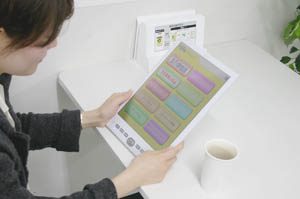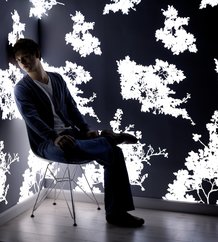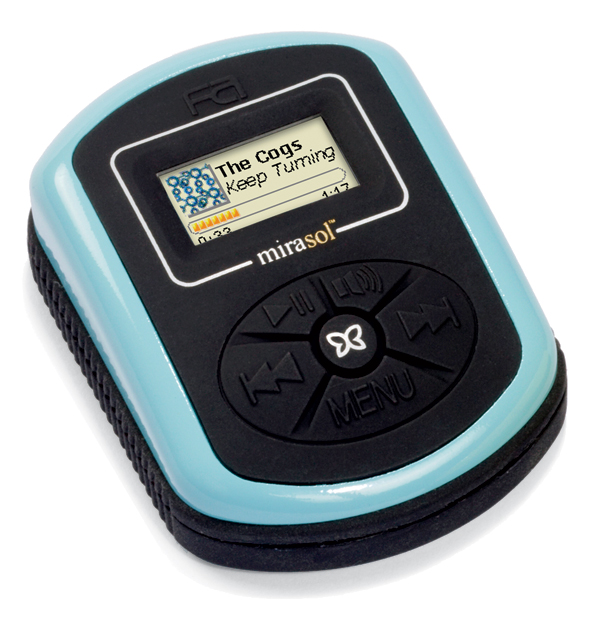
Fujitsu Ltd and Fujitsu Frontech Ltd will conduct a verification test of a mobile information terminal that uses color electronic paper with SoftBank Telecom Corp and Mainichi Newspapers Co Ltd.
Customers of "Termina Kinshicho Fujiya Restaurant" can pick up the terminals equipped with a color electronic paper module on the tables and browse newspapers and advertisements wirelessly sent to the terminals. The four companies will verify whether the electronic paper module can be accepted as a terminal for reading newspapers and other content, and whether the service can promote sales and boost customer satisfaction.
The test is scheduled for Feb 4 to 13, 2009, using Fujitsu Frontech's "FLEPia," a mobile information terminal incorporating color electronic paper. The companies installed four units of the FLEPia so that the restaurant customers can use them for free.
The content delivered to the terminals includes "Mainichi Shogakusei Shimbun" (Mainichi Newspaper for Elementary School Students), advertisements for Fujiya Restaurant and the "Termina" shopping mall, timetables of JR (Japan Railways) trains and weather forecasts.
Users can read the newspapers by operating the terminal while waiting for their orders, or enjoy viewing the advertisements and timetables that are automatically switched to a different screen every several minutes when the terminal is not being operated, such as when the users are eating.
This system uses the "BB Mobile Point" wireless LAN service to deliver the content and to regularly update the content being displayed on the FLEPia.
The electronic paper modules use electricity only when they switch the displayed information. As they don't need to be charged during business hours, there is no need to provide electricity to the table. LCD panel-based terminals, which have been used on tables, require an electrical supply at the table.

Personal comment:
Les exemples d'application quotidienne de devices à base de e-ink ou autre e-paper (couleur ou N&B) se multiplient, quasiment toutes issues du Japon, ce qui tendrait à démontrer que la technologie est beaucoup plus proche d'une véritable exploitation commerciale à grande échelle que cela ne semble paraître en occident.
Le fait que ces devices (e-reader dans les cafés, affiches publicitaires ou bien encore panneaux d'information) soient dispatchés dans des lieux publiques va également participer à l'acceptation des ces derniers par les personnes qui pourront finalement être demandeurs de la technologie, là où les e-book peinent depuis plusieurs années à créer un marché de toute pièce. C'est peut être plus insidieux (créer une demande, un besoin) mais certainement plus efficace et moins risqué pour développer le marché (moins d'unités nécessaires, entretenir une notion de rareté et d'exceptionnelle).









